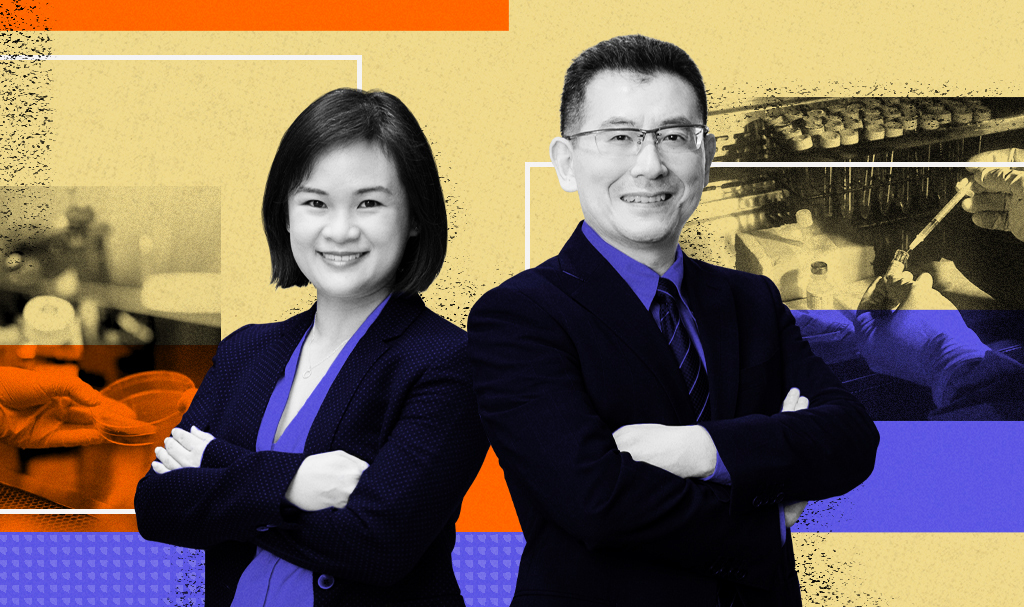[ad_1]

AsianScientist (Dec. 18, 2020) – With the exception of a team of physicists working on nanophotonics, all prizes at this year’s President’s Science and Technology Awards (PSTA) have gone to researchers working on human health or biomedical sciences. Established in 2009, the PSTA are the highest honours a scientist can earn in Singapore.
Normally held with great fanfare at a ceremony at the Istana, this year’s ceremony was considerably more muted. Although the researchers did not receive their prizes to the cheers of a large crowd, the significance of science—especially biomedical research—never shone brighter.
Professor Ranga Krishnan, for example, won the President’s Science and Technology Medal for his leadership in health and biomedical sciences, including his stint as dean of Duke-NUS Medical School and current role as chairman of Singapore’s National Medical Research Council (NMRC). Professor Liu Jianjun, on the other hand, received the President’s Science Award (PSA) for his work at A*STAR’s Genome Institute of Singapore (GIS).
Even the President’s Technology Award, which typically goes to an engineering researcher, was awarded to Professor Dario Campana from the Yong Loo Lin School of Medicine for developing an innovative cell-based therapy to treat leukemia.
Similarly, all three recipients of the Young Scientist Award (YSA)—Dr. Chew Wei Leong, Assistant Professor John Ho, and Dr. Tan Si Hui—were recognized for their contributions to healthcare. Chew, a senior research scientist at GIS, specializes in gene editing technologies for disease gene correction while Ho, who is from the National University of Singapore (NUS), works in the field of wireless healthcare technologies. Tan, who was previously an A*STAR researcher and who is now an associate director at Cargene Therapeutics, was lauded for her past work on stomach cancer.
The remaining trio of researchers who jointly received the PSA alongside Liu came from physics: Professor Nikolay Zheludev, Associate Professor Chong Yidong and Associate Professor Zhang Baile of Nanyang Technological University, Singapore (NTU) were chosen for their fundamental research in topological nanophotonics, which led to a new generation of light-based technologies.
Singapore’s emphasis on health and biomedical sciences is understandable, particularly in the light of an ongoing pandemic and longer term challenges like an aging population. In an announcement earlier this week on Singapore being one of the first countries in the world to deploy COVID-19 vaccines, prime minister Lee Hsien Loong said, “We didn’t get here overnight; we’ve always planned ahead, systematically creating opportunities for ourselves.”
This forward planning was also reflected in the recently announced Research, Innovation and Enterprise 2025 (RIE2025) budget, which saw Singapore setting aside S$25 billion for science and technology over the next five years. While the budget did not specify how much has been earmarked for human health and potential—one of four domains identified as strategic areas—biomedical science has historically received the lion’s share of funding, securing 21 percent of the previous five-year budget of S$19 billion.
For Liu, winning the President’s Science Award (PSA) meant much more than an individual accomplishment.
“This recognition goes beyond my research,” Liu, who is the deputy executive director of GIS, told Asian Scientist Magazine. “This award is a recognition of the importance of studying Asian genetics.”
Liu, who joined GIS in 2002, has been a genetics researcher for decades, uncovering biomarkers that lead to diseases and lethal drug reactions. His latest and most ambitious project yet is a pioneering study to sequence and analyze nearly 5,000 Singaporean genomes. The project was inspired by the underrepresentation of Asians in genetic studies, which would preclude them from reaping the benefits of the precision medicine revolution, he said.
Precision medicine aside, Singapore plans to continue funding basic research, with one third of the RIE2025 budget set aside for that purpose. Such basic science may take a decade or longer, but could lead to large pay-offs in solving practical problems, said YSA winner Tan.
“It is heartening to see that purposeful and rigorous basic science is valued by our society,” she added. “Basic science is the key foundation to future translational discoveries.”
With Singapore’s biomedical dreams fuelled by national funding to rival its ambitions, scientific leadership on a global scale is possible yet.
———
Copyright: Asian Scientist Magazine; Photo illustration: Shelly Liew/Asian Scientist Magazine.
Disclaimer: This article does not necessarily reflect the views of AsianScientist or its staff.
[ad_2]
Source link